Charts of the Week
Current economic trends from 28 September to 2 October 2020: electricity consumption, traffic of electronically tolled vehicles, trade, consumer prices, yields to maturity of 10-year government bonds
Certain short-term indicators of economic activity continue to fluctuate close or just below comparable last year’s levels. Electricity consumption dropped somewhat again in the fourth week of September (by 4%), after being already completely comparable year on year in the previous two weeks. Freight traffic was down again year on year, by around 9%. Turnover in trade reached last year’s level in July, but preliminary data for August again indicate a decline.
Consumer prices were lower year on year in September for the second consecutive month, mostly due to lower prices of oil products and semi-durable and durable goods.
The situation on euro area bond markets moderated in the third quarter; the yield to maturity of the Slovenian bond declined considerably.
Electricity consumption, September 2020
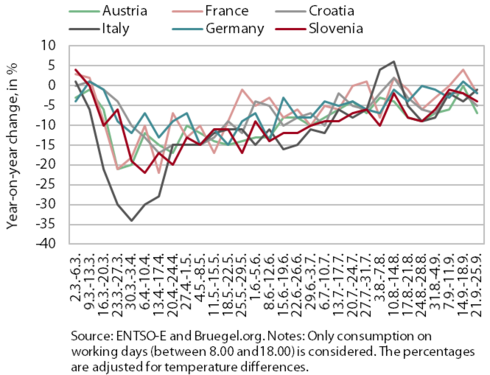
In the fourth week of September, the year-on-year lag in electricity consumption was again somewhat larger. After weekly electricity consumption came very close to last year’s level in the first half of September (-1% and -2%), the year-on-year decline increased slightly again in the fourth week of the month (-4%). The decline also deepened in our main trading partners (with the exception of Italy). In the fourth week of September, the year-on-year decline was strongest in Austria (-7%). Other countries recorded smaller declines, between -1% (Italy) and - 5% (Croatia).
Traffic of electronically tolled vehicles on Slovenian motorways, September 2020
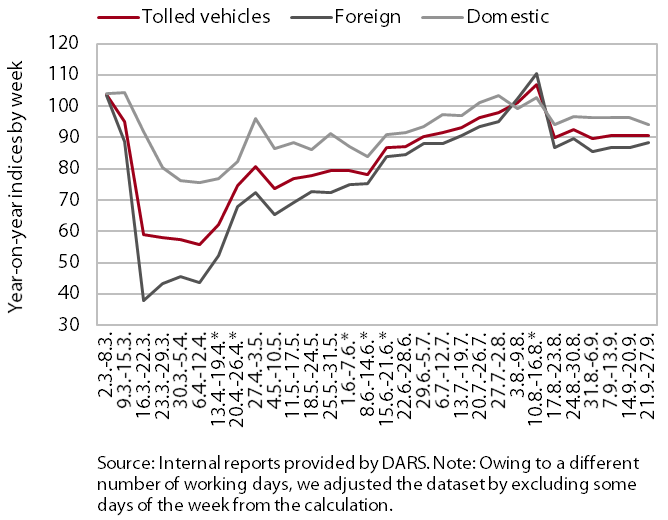
Freight traffic on Slovenian motorways from the second half of August to the end of September was around a tenth lower than before the epidemic. After falling sharply with the declaration of the epidemic, it had increased more strongly since mid-June and by mid-August it was already higher year on year (adjusted for the holiday effect). Then it fell again and was around 9% lower year on year until the end of September. The number of kilometres travelled by foreign hauliers fell more year on year than that travelled by domestic hauliers (by 12% and 6% respectively).
Trade, July 2020
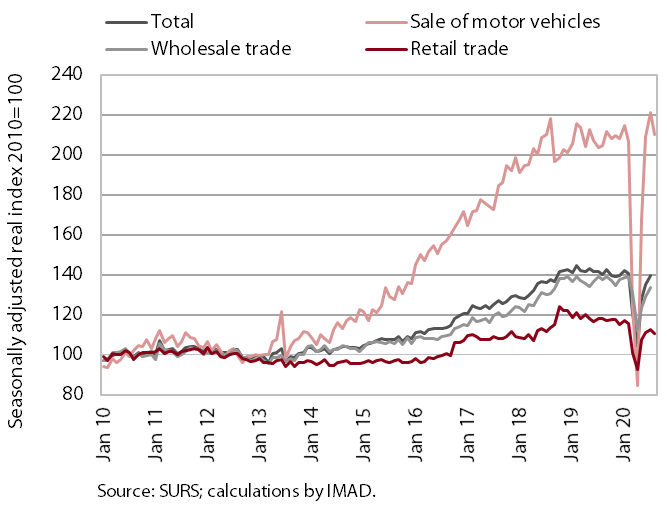
Turnover in trade strengthened further in July; preliminary data for August, however, indicate a decline in some segments. With further growth in all three main segments, in July total turnover was already similar to that before the outbreak of the epidemic and only slightly lower than in July 2019. After falling sharply in March and April, turnover in the sale of motor vehicles strengthened the most in the next three months, being already a tenth higher year on year in July before dropping somewhat in August according to preliminary data. Turnover in retail trade of non-food products was also already a tenth higher year on year in June and July together, and, with further growth, in August. Despite growth from May onwards, turnover in the retail sale of automotive fuels remained lower year on year in July and the lag is set to increase to a quarter after a sharp fall in August. This was, in addition to lower sales of fuels to households and lower freight traffic, probably also a consequence of lower tourist transit in the summer.
Consumer prices, September 2020
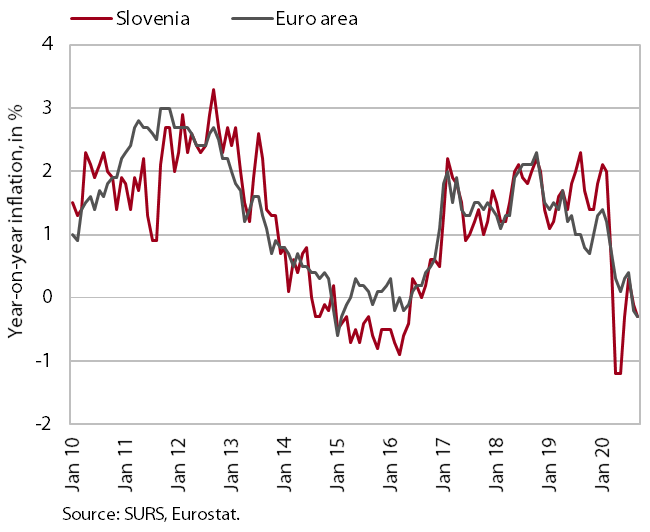
Consumer prices were again lower year on year in September. The decline was still mainly due to lower prices of oil products. Prices of semi-durable and durable goods also dropped further year on year. Year-on-year growth in prices of services was also significantly lower in September. At 0.8%, it was the lowest since 2016 and half lower than in the previous month. We estimate that this was largely a consequence of a higher base due to last year’s increase in health insurance premiums. At the same time, prices of services in the group recreation and culture also dropped somewhat year on year. After the slowdown in the middle of the year, food price growth strengthened again in the last two months, exceeding 4% in September.
Yields to maturity of 10-year government bonds, September 2020
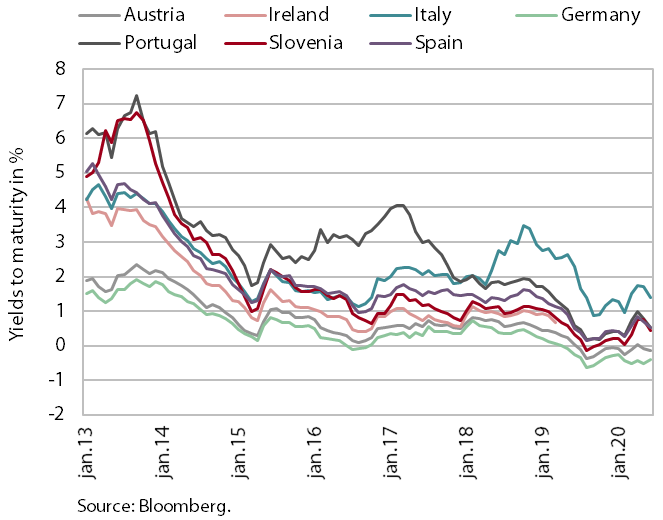
After deteriorating at the outburst of the epidemic, the situation on euro area bond markets moderated in the third quarter. The yield to maturity of the Slovenian bond thus declined by almost 60 basis points, to 0.09%, and was already lower than before the outbreak of the epidemic. The spread to the German bond also declined to a similar extent, to 56 basis points.
